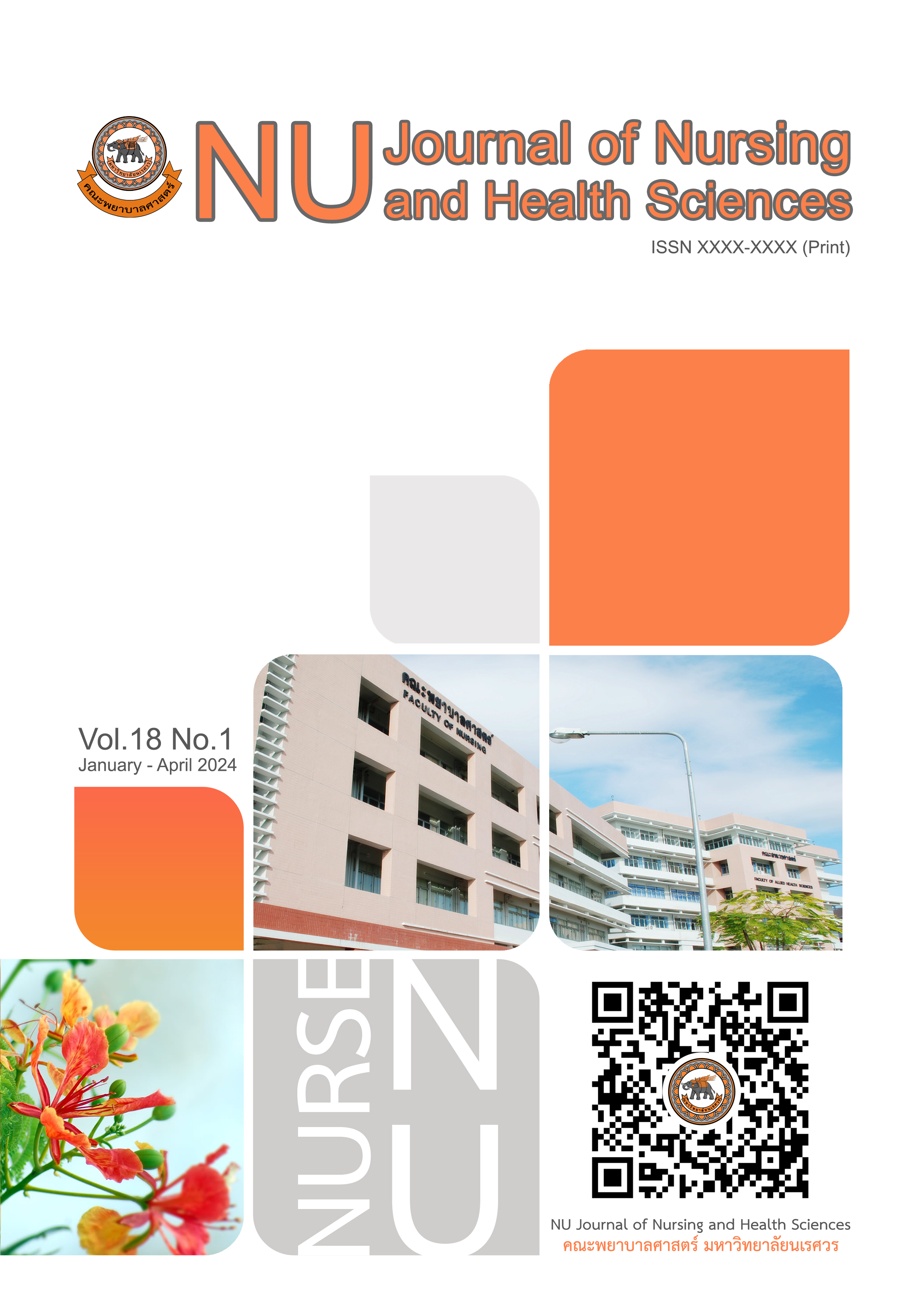The Health Literacy on Decreasing Blood Pressure of Hypertensive Patients in Health Region 4 Saraburi
Main Article Content
Abstract
The descriptive research purposed to study health literacy levels and examine the health literacy level on decreasing blood pressure of hypertensive patients in the health region 4 Saraburi. This study used the health literacy concept of Nutbeam. The study sample were 144 hypertensive patients in the health region 4 Saraburi by using multi-stage sampling procedure. The research instrument was the health literacy questionnaire that was tested for content validity by 5 expert panels. The reliability was .92. Data were analyzed by using frequency, mean, S.D., percentage, and simple linear regression procedure. Results showed that the majority of sample was female (68.10%), and male (31.90%). The majority range of age was 61-70 years (37.90%). Education was primary school (59.00%). Most of the marital status was marriage (53.50%). The majority of sample was not working (50.00%). The levels of health literacy were at the more level ( = 280.43, S.D.= 34.59). With respect to the aspect of health literacy, the most average score was decision skill domain ( = 60.40, S.D.= 9.34). The least average score of health literacy domain was media literacy (mean= 33.94, S.D.= 6.46). The health literacy levels were statistically significant on decreasing the systolic blood pressure levels of hypertensive patients at .01 (R= .18, R2 = .03, Adjusted R2 = .03, p≤ .01). and the diastolic blood pressure of hypertensive patients at .00 ((R= .23, R2 = .05, Adjusted R2 = .05, p≤ .001).
Article Details

This work is licensed under a Creative Commons Attribution-NonCommercial-NoDerivatives 4.0 International License.
References
Cohen, J. (1988). Statistical power analysis for the behavioral sciences (2nd ed.). Hillsdale, NJ: Lawrence Erlbaum
Associates, Publishers.
Division of non-communicable disease. (2022a). Percentage of controlled diabetic patient/ hypertensive patients in
Health Care Region 4. Retrieved 18 December 2022 from https://hdcservice.moph.go.th. [in Thai].
Division of non-communicable disease. (2022b). Results of evaluation NCD Clinic Plus. session 1: 2561.
Retrieved 12 September 2022 from http://www.thaincd.com/2016/news/hot-news-
detail.php?gid=18&id=13078. [in Thai].
Du, S., Zhou, Y., Fu, C., Wang, Y., Du, X., & Xie, R. (2018). Health literacy and health outcomes in hypertension: An
integrative review. Internal Journal of Nursing science, 5(3). 301-309. doi: 10.1016/j.ijnss.2018.06.001
Dumville, J. C., Torgerson, D. J., & Hewitt C. E. (2006). Reporting attrition in randomized controlled trials. BMJ, 332.
-971.
Ekpharakorn, W. (2020). Report of the survey health sattus of Thai people by physical examination. Version 6 B.E.
-2563. Bangkpk: Uksorn Graphric design. [in Thai].
Faul, F., Erdfelder, E., Lang, A.-G., & Buchner, A. (2007). G*Power 3: A flexible statistical power analysis program for the social, behavioral, and biomedical sciences. Behavior Research Methods, 39, 175-191.
Faul, F., Erdfelder, E., Buchner, A., & Lang, A.-G. (2009). Statistic power analyses using G*Power 3.1: Test for correlation and regression analyses. Behavior Research Methods, 41, 1149-1160.
Health Data Center. (2023). Statistics of Hypertension. Retrieved August 21, 2023 from
https://hdcservice.moph.go.th/hdc/reports/report.php?source=pformated/format1.php&cat_id=b2b
e64c4e6c92d4b1ec16a599d882b&id=6d0c58de6b948dd0eac3c736c7584b59. [in Thai].
Kangkeeree, S., Danyuthasilpe, C., & Siripornpibul, T. (2020). A health promotion program on health behaviors, body
mass index and blood pressure among people at risk of hypertension. Journal of nursing and health sciences.
(1). 80-96. [in Thai].
Matsee, C., & Waratwichit, S. (2017). Promotion of health literacy: From concept to practice. Boromarajonani College of
Nursing, Uttaradit Journal, 9(2), 96-111. [in Thai].
Norasing, M., & Thanomphan, S. (2019). Health literacy and health behavior in patients with uncontrolled blood sugar
level or blood pressure: a case study of Nakornping Hospital, Chiang Mai. Journal of Nakornping Hospital,
(1), 35-50. [in Thai].
Nilnate, W., Hengpraprom, S., & Hanvoravongchai, P. (2016). Level of health literacyin Thai elders, Bangkok, Thailand.
J Health Res, 30(5), 315-321. [in Thai].
Nuntakamol, J., Markmee, P., & Saengoen, S. (2022). Health literacy factors influencing on hypertension preventive
behaviors among risk group with hypertension in Tha Chai subdistrict, Si Satchanalai district, Sukhothai
province. Science and Technology Northern Journal, 3(3), 18-37. [in Thai].
Nutbeam, D. (2008). The evolving concept of health literacy. Social Science Medicine, 67(12), 2072-8.
Pragodpol, P., Chaiyarit, A., Chanpen, U. Thienkumsri, K. Sangthong, K., Manyanont, W., … Ruchirachatkool, C. (2022).
Policy recommendation: Promoting health literacy for delayed progressive chronic kidney disease of
diabetes mellitus and hypertensive patients in the 4th Health Service Region. Retrieved 11 December 2022 from
https://kb.hsri.or.th/dspace/handle/.11228/5558?locale-attribute=th. [in Thai].
Tanasugarn, C., & Neelapaichit, N. (2015). The development health literacy assessment for diabetes patient and
hypertensive patient. Nonthaburi: Health education Division. Department of Health Service Support. Ministry of
Public Health.
Thai Hypertension Society. (2022). 2019 Thai guidelines on the treatment of hypertension. Retrieved 21 September 2022
from http://www.thaihypertension.org/hypertensiondetail.php?n_id=442. [in Thai].
Wang, Y., Chen, T., Gan, W., Yin, J., Song, L., Qi, H., & Zhang, Q. (2022). Association among high blood pressure
health literacy, social support and health-related quality of life among a community population with
hypertension: a community-based cross-sectional study in China. BMJ,12 (6), e057495. doi: 10.1136/bmjopen-
-057495

